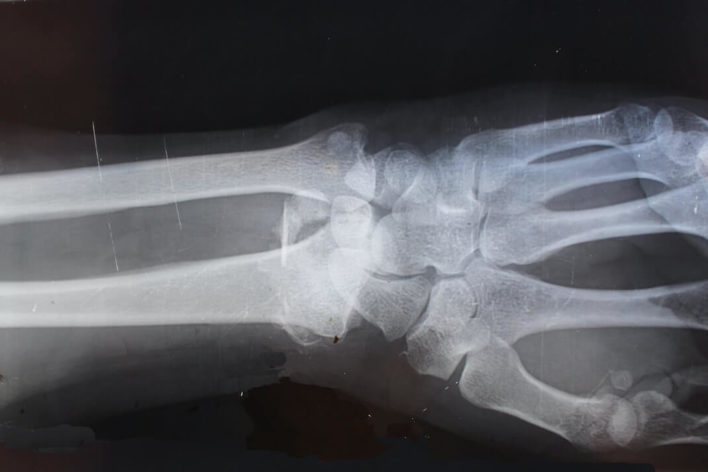Industry Pathway: Radiological Technologist

Why Pursue a Career in Radiology?
Going into a career in Radiology can be a path for innovative and analytical thinkers who want to go into that field of health care. Radiology is basically the diagnosis, prevention, and treatment of diseases and different medical issues. People in this field use X-rays, MRI machines, as well as ultrasounds to find out what is going on within the human body.
Radiologists also prepare, perform, and assess radiologic tests and procedures. They work to identify health issues so that others in the medical field can treat those issues and help with patient health.
Pursuing a career in Radiology allows someone to research and develop medical tools and treatments. They carry out detailed tasks, explain procedures and treatments to patients, use their problem-solving skills, communication skills, and work on detailed tasks with members of their team as well as their patients. Those who already have these skills would be right for this type of career path.
Radiology Career Outlook
The career outlook for a career in Radiology is good. According to BLS, which is the Bureau of Labor Statistics, the healthcare occupation is projected to grow 13% from 2021 to 2031. This is much faster than all occupations and is expected to add about two million new jobs over those years.
Radiologic and MRI Technologists are expected to grow by 6% from 2021-2031, which is about average for all occupations.
When it comes to how much money you can make in the Radiology field, this depends on a few factors. The average salary for Radiology Techs, according to Salary.com, is $63,801. Here is a breakdown of a few Radiology Careers and the income you can make.
| Annual Salary Ranges for Radiology Careers | |||
|---|---|---|---|
| JOB TITLE | Lower Range | Average | Higher Range |
| Radiology Technician | $58,001 | $63,801 | $70,301 |
| Diagnostic Medical Sonographer | $56,593 | $73,820 | $98,815 |
| Cardiovascular Technologist | $56,502 | $56,502 | $71,610 |
| MRI Technologist | $65,837 | $76,983 | $88,428 |
| Nuclear Medicine Technologist | $79,975 | $88,993 | $97,359 |
Your salary can also depend on your state and location. For example, in California, the annual median income for Radiologic Technologists and Technicians is $95,170; however, in Texas, it is $62,810. You can read more about locations at BLS.
Skills Gained With a Radiology Degree
When you go to get your Radiology degree, you will be learning the skills you need to work as a radiologist or in a similar role. These skills include but are not limited to:
- Technical skills
- Mathematics
- Communication skills
- Ability to connect with people
- Ability to pay attention to important details
- Scientific knowledge
- Medical understanding
- Patience
- Knowledge of tools and equipment used in the field
Radiology Career Paths
When going into Radiology, there are different concentrations you can pursue based on your interests and skill sets. Here are a few of them:
- Radiologic Technologist – Where you would perform X-rays and other diagnostic imaging tests for regular screenings or to check on the health of a patient.
- Nuclear Medicine – Where you would use and administer special radioactive drugs to patients and also use nuclear imaging tests.
- MRI Technician – Where you would operate and understand the result of an MRI machine.
- Ultrasound Tech – Where you would operate ultrasounds and other high-frequency imaging equipment and watch to make sure that babies in utero are healthy and growing the way that they should. You can also determine gender using the equipment.
- Radiation Therapists – Where you would treat patients by administering radiation and work mainly with cancer patients.
Other disciplines include:
- Bone Densitometry
- Mammography
- Vascular Interventional Radiology
- Vascular Sonography
- Computed Tomography
- And more…
How to Start Your Career in Radiology
If you have decided to pursue a career in Radiology, your first step is determining how far you would like to go within this career field. You will need to at least get an Associate’s in Radiologic Technology which you can earn at either a technical school or a community college.
You can then go on to get your bachelor’s degree in Radiology, or get your master’s degree. You can do so at a four-year university and a graduate school.
If you do want to work in the highest-paying jobs in the field of radiology you would need to go to medical school. This would take you 13 years from the time you graduated high school or received your GED. You would first need to get your bachelor’s degree which should take you four years. After that, you would go to medical school for four years, complete a one-year internship, and then four years in a residency training program in Diagnostic Radiology.
If you don’t want to go that path, there are plenty of great jobs available to those with an associate’s degree, bachelor’s degree, or master’s degree. There are Radiology careers at every level. You will want to make sure that the college you attend has an accredited program.
You would also need to think about certification if you are going into Radiology. AART or the American Registry of Radiologic Technologists is the main certifying body. In order to get your certification you would need to complete the following steps:
- Would need at least an Associate’s Degree in Radiologic Technology or a similar field.
- Choose your specialization. There are 15 different tracks that ARRT offers, however, only these six are available for first-time credential candidates: nuclear medicine technology, magnetic resonance imaging, vascular sonography, sonography, radiography, and radiation therapy.
- Complete a course in at least one of the six primary eligibility fields.
- Meet the ethics requirements, which include traits such as professional conduct, reporting procedures, and management of patient records.
- Complete an application.
- Prepare for and then take the exam.
- Pass the exam and maintain your certification.
Keep in mind that in some states you may also need state licensing. More than 75% of states do have licensing laws covering the practice of radiologic technology. Some states will require you to be certified and registered through ARRT. It is important to know what your state requires or any state you may be living in.
Certification is important because many employers in this field will require it. Even if they don’t, having that certification will show the employer that you are committed to this career path. You can read more about the certification process on the ARRT page.
After you graduate and receive your certification, it will be time to start applying for jobs and you will be on your way to a career in Radiology.
Hear from an Industry Expert

Anthony Mungo, Director of Radiology, Atlantic Health System
Professor at John Patrick University of Health and Applied Sciences
- Director of Radiology overseeing all administrative, financial, and operational activities in a large hospital system
- Radiological Technologist for over 20 years
- Passionate about creating career tracks for imaging specialists and cross-training opportunities in the radiology disciplines
How do I get into this Industry?
Radiologic Technologists (X-ray Technologist) are in high demand. For most states, it will require that you complete an Associates Degree in Radiologic Technology.
What Certifications do I need in this industry?
Most states require that you pass the board registry to become a certified x-ray technologist. This is administered by the American Registry of Radiologic Technologists (ARRT).
What degrees or education pathways should I take?
To be an x-ray tech, you would want to complete an associate degree in radiologic technology.
AS degrees can last from 12 months – 24 months.
Translating my military experience specifically for this industry: Many universities will transfer in previous college credits or military experience to meet the common general education classes.
Entry-level/mid-level experience I need for this industry:
Once you have graduated and have passed your registry, you can practice in nearly all states. Some states require an additional state registration.
How do you advance in this industry?
This is a very exciting base as it provides a great foundation. You can advance into specialty imaging to include: CT, MRI, PET, Nuclear Medicine, and Sonography (Ultrasound). You can also advance into Radiation Oncology (cancer) disciplines to include: Radiation Therapy, Medical Dosimetry, and Medical Physics. If you decide you want to pursue an administration or business pathway, the radiological technologist profession is a great base for management and director positions.
What are they looking for from me to communicate in an interview?
A successful medical imaging specialist has some unique skill sets that are common to military members and their families. You should be focused, patient centered, and recognize the importance of quality work. The quality of your image could save someone’s life.
What can I do while still in the service to prepare for this industry once I get out?
If you have the opportunity to take general education college courses, this will allow you to focus on the core technology courses in your studies.
What is the work-life balance like in this industry?
The radiologic technology market is very unique and flexible. Do you want to work 5 days a week, 4 days a week, or 3 days a week? Do you want to work 1st shift, 2nd shift, or 3rd shift? The flexibility of the work schedule allows the technologist to focus on what is best for themselves and their families. This is especially important for those that are advancing their skill sets (upskilling)
Tips and tricks to getting into this industry:
The industry is facing shortages like it never has before. This is a great time to enter the profession as the demand is high and the opportunities to enter a new career can be fast tracked. It is always good to talk to individuals that have been in the market space that have experience and can predict the future trends.
Start your Education in Radiology online at John Patrick University of Health and Applied Sciences
Contact John Patrick University of Health and Applied Sciences
Phone: (574) 232-2408
Email: militaryadvisor@jpu.edu
John Patrick University
JPU Supports the military community by:
- 20% tuition discount for Military family members (spouse and child)
- Accelerated 16-month plans of study
- Yellow Ribbon Program
- Post 9/11 GI Bill®
- CLEP Exams
- DSST exams
- VRRAP Program
- Tuition Assistance Program
- College Credit for Military Training (pending)

